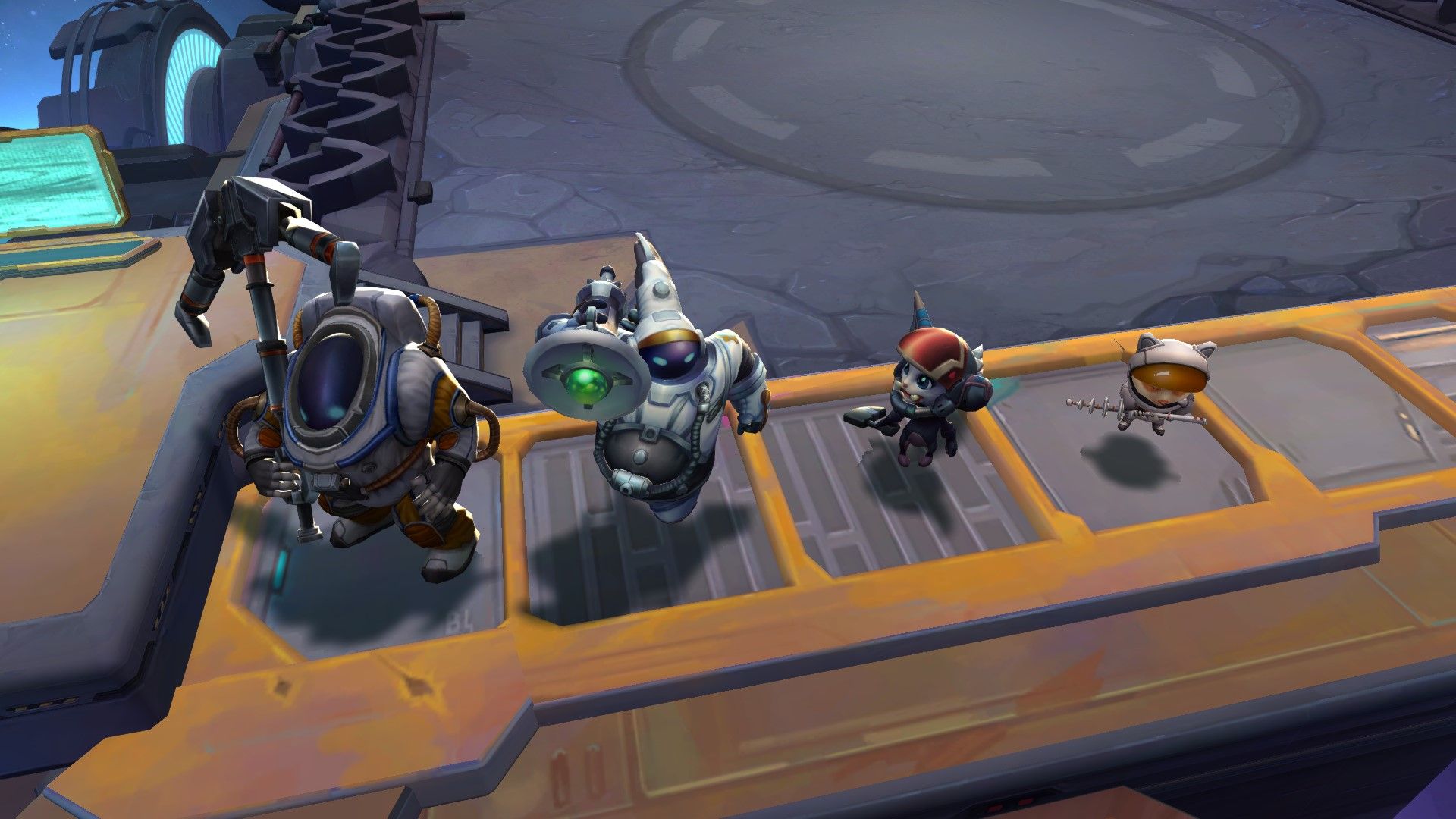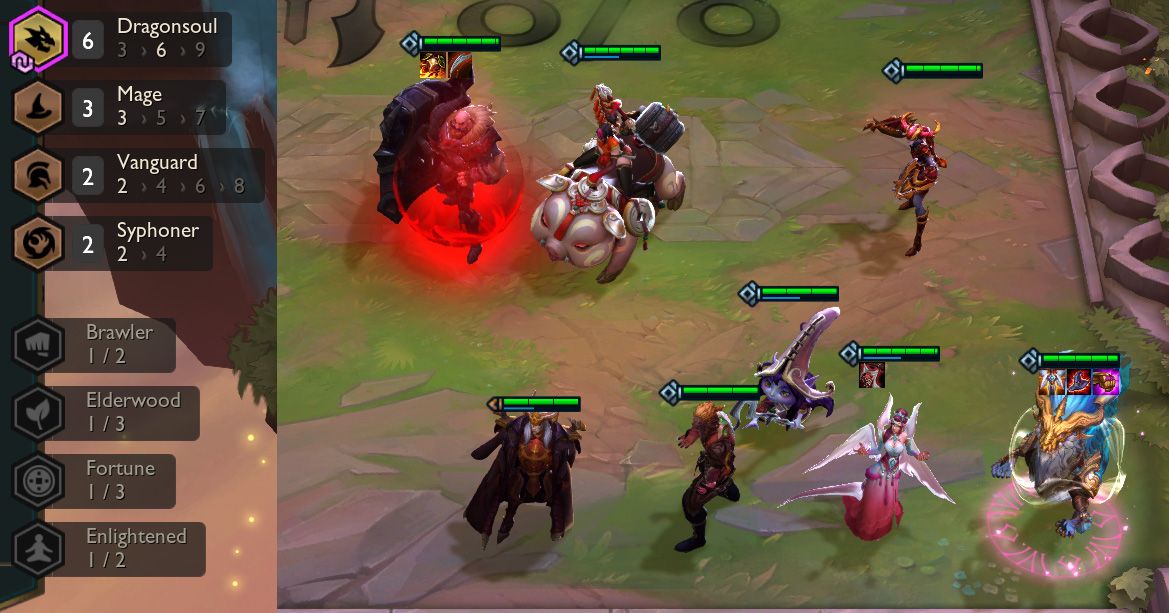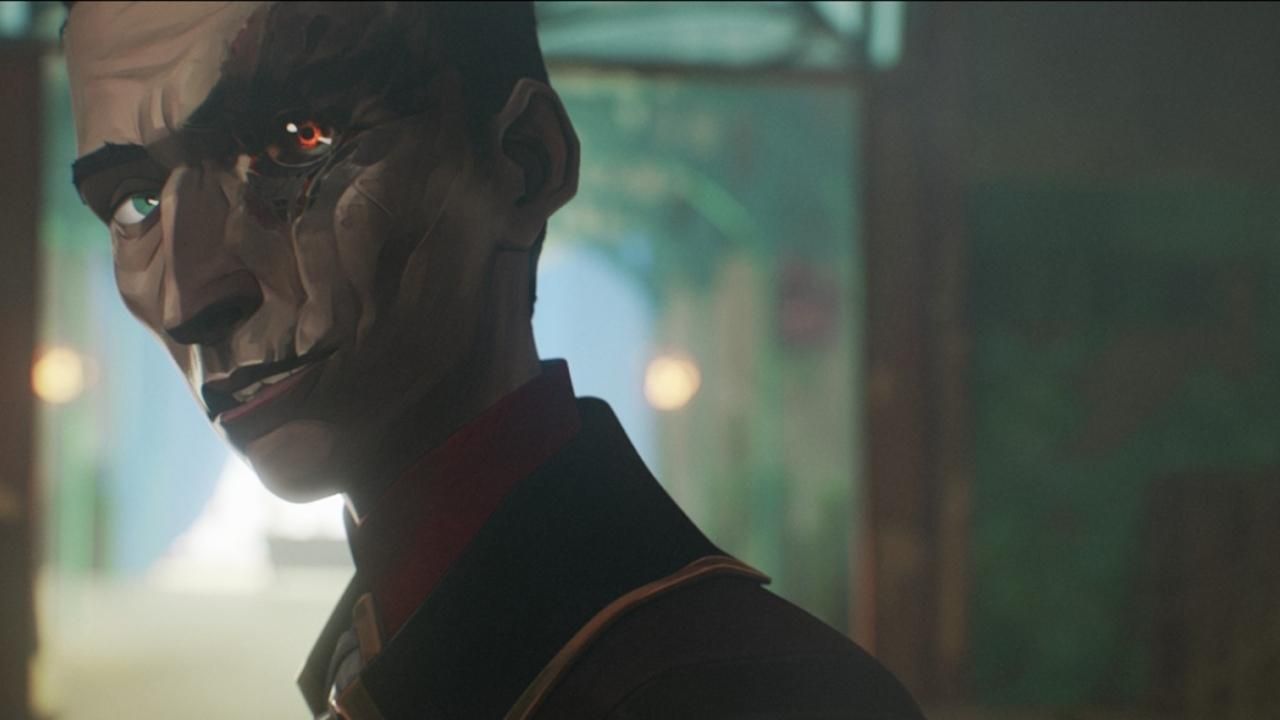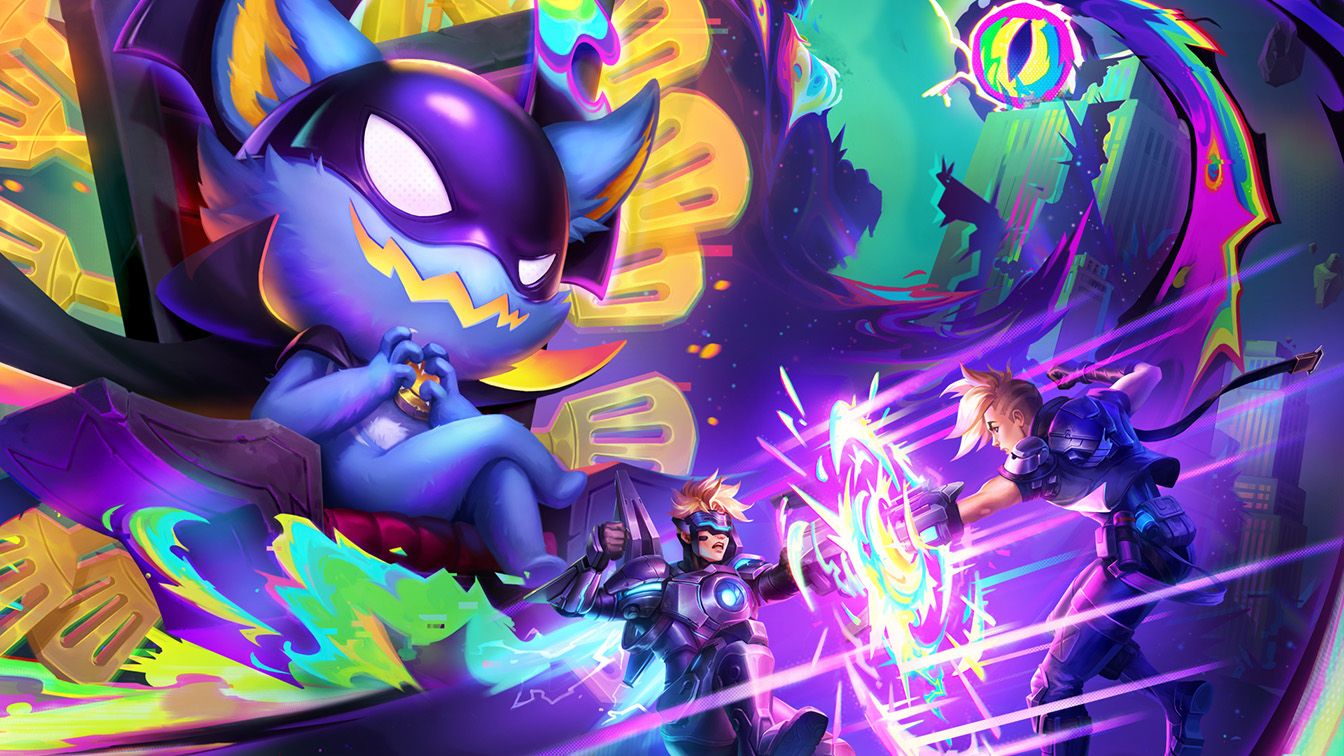Talking Tactics: Reflecting on the end of Mid-sets
On September 13th, TFT’s final mid-set - Horizonbound - goes live, making way for our new three-sets-a-year model. When we announced this about five months ago, we mostly focused on how switching to the three-sets-a-year model would benefit the TFT player experience with more exciting new set content, fresh thematics, and novel explorations of mechanics. If you haven’t seen that Dev Update, be sure to give it a watch! Now that we’re a bit further along though, we’re going to give you a deeper inside look at our philosophy on the swap by focusing on why we’re removing mid-sets. For the rest of this piece, I’m pulling back the curtain on a conversation myself (Rodger “Riot Prism” Caudill), Alex “Riot BlueVelvet” Cole, and Mort had on the complex relationship we’ve had with mid-sets.
In TFT, we don’t talk about the years that we’ve accumulated on the team; we think (and age) in sets. When we were discussing how to share our experiences with mid-sets, I went to the person who’s dealt with all nine of them: our beloved Director of Game Design, Mort! I also chatted with our Gameplay Product Lead who’s responsible for managing all the pods (term for small teams on each set & live), Alex, who’s only two sets old (so youthful). Finally, as the person who writes things, I work across every team on TFT, from Marketing, to Live Balance, Events, Cosmetics, and beyond—and I’ve been doing so since our fourth set, which makes me a TFT Kindergartener (five sets old). Now that we’ve got our intros out of the way, let’s hop into the talking part of this Talking Tactics.
The Birth of Mid-sets: Return to the Stars
Mort: Back in Rise of the Elements we tried drip feed content, where we’d release a few new champions, and sometimes traits (e.g. Soulbound in Rise of the Elements) every couple of weeks. We initially thought that this would keep a set feeling fresh, but we found that the impact of adding a couple new champions wasn’t enough to get players excited. In fact, the impact was near nonexistent when we looked at player sentiment, playtime, etc. But at the same time we knew we wanted to update the game significantly as players mastered the set. So we decided to repackage drip content into one big moment, starting with our first mid-set in Galaxies with Return to the Stars.
Right away, we learned that we signed ourselves up for a brutal workload, especially considering the size of our team. Internally, Return to the Stars had a huge scope and not a lot of time. Our team was small, split across different projects, and even so, we were doing the classic TFT thing: taking big risks with units like Bard.
Alex and Rodger fangirl over Bard with audible giddiness
Bard placed Meeps on your bench each time he used his ability, and his attacks generated Mana. This was the first time we made a champion like Bard, and honestly, he’s still incredibly unique even six sets later, but he took tons of work. Witty, aka Riot Wittrock, was working on Bard and Meeps, and had to build entirely new capabilities for TFT that we still benefit from today just to pull off this 3-cost. But, we always felt like just champs and traits weren't enough for a mechanic. So while we were struggling to meet the challenges posed by the crazy roster swap that Return to the Stars had, we also wanted to do some work on our mechanic, Galaxies, which were similar to Region Portals (but far less refined, and couldn’t be voted upon).
We spent a lot of design hours just narrowing down which Galaxies we wanted to keep, creating a list of eight “best-hits,” which we could only add new Galaxies to if they were better than the eight we already had. For instance, we removed Lilac Nebula, which made the first carousel contain only 4-costs.
Alex: Lilac galaxy was super tilting because if you got stuck with Soraka off the first carousel while everyone else got solid 4-cost carries, you were turbo-doomed. I almost stopped playing this set entirely because of how coin-flippingly awful this galaxy was.
Mort: Yeah, that Galaxy made opening Carousels far too impactful. Refining Galaxies like Lilac Nebula, would lead to us seeing mid-sets as chances to improve our core set mechanic, but as we’ll talk about later, this came with consequences.
Rodger: Ah yes, we did this with Festival of Beasts, which was a fan favorite. Speaking of…
Our Most Beloved Mid-set: Festival of Beasts
Rodger: Our mid-set for Fates, Festival of Beasts (FOB), has been our most beloved mid-set to date, and that’s because we did oh so much. We swapped out 22 champions, added Lucky Dice, Item Removers, Item Reforgers, Training Dummies, Ornn Artifacts, Azir as a 5-cost, an all new mini-mechanic, Lucky Lanterns, and were continuing to perfect the Chosen mechanic, patch by patch.
Mort: Yeah, it was a lot. The big thing, and learning from FOB, was the mini-mechanic, the Lucky Lantern. That was our first sign that, if you take the game and give players a little bit of extra candy, it's usually received pretty positively. It added variance and simple power—cool. We then updated a bunch of champions but the real unsung hero of the mid-set was the core mechanic, perhaps our most loved mechanic since Augments—the Chosen mechanic.
Rodger: In case our readers haven’t played it, Chosen made it so a unit in your shop could appear as a two-star and when fielded, would give you +1 additional benefit to one of their traits. It added a ton of game-to-game variance since the mechanic wasn’t super controllable, which we’d continually adjust to become a bit more consistent by set's end.
Alex: Yeah, Chosen was a mechanic that started out good, and then was made even better by the end of Fates.
Mort: True, but like we’ll discuss again in our section on Monsters Attack! (our eighth set), those quality of life changes don’t need a mid-set. With our improvements for Chosen, those changes also came more gradually. We actually made small adjustments to the mechanic over the course of several patches as players learned new ways to master (and break) the system.
Alex: Those changes showed, too. When we ask players what mechanic they like or miss the most, the answer, by a long shot, is always Chosen. So it’s not surprising that FOB was so well-loved, because it not only brought so much new content, but it also had a more refined version of the Chosen mechanic.
Rodger: Mind telling us what was going on during FOB’s production?
Mort: Well, we saw what we had done for Return to the Stars had moved the needle slightly, so we wanted to do it again for Fates, but bigger. And so the TFT team has a history of biting off more than we can chew—but this was our answer to the question we posed to each other, “What could a really big mid-set look like?” And at the time we actually had an okay number of people available, because Reckoning already had a team on it that was working on a mechanic called Augments at the time (more on this later). And we couldn't start Gizmos & Gadgets yet, because the team that would work on that set was still on Fates. We actually had a good sized team for FOB, which allowed us to take a bigger swing at the mid-set that just so happened to pay off. But having that size of a team for a mid-set was not a luxury every mid-set could have, and it showed, especially further down the road.
Reworking a Set: Dawn of Heroes
Mort: To really grasp the insane story of Dawn of Heroes (DOH) we have to talk about Reckoning. If you recall from conversations about this set, you may know that we originally planned for a version of Augments to be the core mechanic. The team had worked on this now-evergreen staple for their first several weeks of development, but alas, TFT, and Riot had a big moment coming: Arcane. And that moment needed a big, and thematically resonant mechanic… Hextech Augments.
Rodger: So like a Jenga-hater purposely sabotaging a game of Jenga, we removed the most important element of a new set: the basis to the set that we needed to build from. And then were like—oops?
Alex: How does someone dislike Jenga?
Mort: Anyways, we removed Augments and replaced them with Shadow Items, which are easily our most polarizing mechanic of all time. The set had some really cool features (Hellions, Abomination, the Armory system), but it wasn’t enough. Shadow Items were too complex and frankly, unfun for most players. Internally, we’d meme the kiss/curse mechanic as something to stay away from in general, the exception being when you can opt-in to that play style with Augments like Cruel Pact or Infernal Contract.Rodger: Reckoning was a real reckoning for us. The set had players dropping off like Tactician Health when buying Teemo (a Legendary unit that cost Health instead of Gold). Coming off the back of FOB we had some of our highest active player numbers of all time, and when Reckoning launched those numbers were almost immediately cut down.
Mort: At the time we had some really tough meetings where we knew we had to do something drastic. It’s sort of poetic. Reckoning with its theme being so dark, had launched us into an era of uncertainty internally—it was hard not to take things personally, and to move on to fix things.
Rodger: But we did move on. With our mid-set, DOH, we brought players Radiant Items and the Divine Blessing, one of the most beloved mini-mechanics.
Mort: We had always had a plan for Radiant Items. They were actually gonna be like Shadow Items, in that you’d get Radiant components and you’d be able to build them out.
Rodger: That’s right, I remember writing up a press release about them, where you could combine Radiant components with Shadow components to purify them, but we pivoted again after hearing the community’s feedback about Shadow Items.
Mort: Yeah, so once again the odd pod (at the time we had two pods for even versus odd sets), would have to take a huge swing and completely redo a mechanic. For once, we weren’t just adding a mechanic, we were taking away one. And with all the feedback we got about Reckoning’s mechanic, we knew we had to make this one fun.
Rodger: And we did! The players who survived the Reckoning were gifted with an incredibly fresh mid-set that had the mechanic scope of an entirely new set. But it was obvious that that focus on the mechanic came at the cost of a smaller champion refresh.
Mort: I mean, there is a reason we still have Radiant Items four sets later—they are awesome, simple power spikes that add a ton of variance, but we spent most of our time and effort on them, so when it came to swapping out champions and traits we could really only afford to swap out one big vertical. But the real kicker is, despite the insane amount of work that went into saving Reckoning, it was a bit futile.
Players didn’t come back after Shadow Items. They’d see a mid-set, and think about their first few games with the core set, and just couldn’t be enticed to come back again. So even after delivering a mid-set with the mechanic scope of a full set, and making Dawn of Heroes a truly awesome experience, Reckoning had done too much damage to allow players to come back for the mid-set.
Mistakes and Silco: Neon Nights
Mort: Neon Nights was our biggest mid-set with over 20 units swapped out and more than 80 new Augments, but to accomplish this we had to rely on many reprints and some less exciting trait adds.
The team really felt the time and resource constraints of mid-sets during Neon Nights as we lacked the numbers of devs that we had on mid-sets like FOB. But even with the odds stacked against us, some mistakes became important lessons for us in future mid-sets.
During Neon Nights, we took unique champions like Draven, Urgot, and Fiora and swapped them out with champions that had been seen before, like Sivir, Lucian, Sejuani, and Jarvan IV.
But we also added Silco, which was a huge deal for TFT. We’re not sure if he hit the bar in terms of mechanics, but it was a really cool opportunity, and one we learned a lot from.
Rodger: We could do a whole article on Silco, and it’s great that we’re bringing him back for our lore focused set. But getting Silco in was a struggle. We got a fresh voice over from Jason Spisak, but we had to write it on a tight timeline, and then record it even faster. Even with the mileage we put in, we weren’t able to ship Silco day one of the mid-set with VO—that wasn’t added for another 2 full patches. But still, we had Silco, and it felt like TFT was driving some really cool, uniquely-TFT innovation. Learning how to break free from convention like that would set us up for a future where we could continue leading the charge on our own wild creative ideas.
Sohm and Resources: Uncharted Realms
Alex: I joined the team during Dragonlands, when we first began our operation of switching to a three-set-a-year model behind the scenes. For the first time ever, once the Dragonlands team finished the mid-set, they’d move on to our tenth set. But for now, we were still making mid-sets, with the same timeline (around three months) as usual. We used Uncharted Realms to do several things: rework Dragons, add the Chaos and Order Treasure Dragon, and add two of our most game-warping traits of all time (Lagoon and Darkflight).
Just that alone would have been tough, but we also had gameplay challenges throughout the mid-set. We had to rework Lagoon six times, and Darkflight was, well, complex to say the least.
Rodger: And we also had Sohm, our very first original unit for TFT that was built from scratch.
Alex: We did! We started during the release of Dragonlands. We had the concept of her as a water dragon very early on, but didn't really know what shape that was going to take until we got concepts back for her.Funny enough, Sohm may have been the easiest part of the mid-set, at least in terms of creating the character and shipping her. The spell took a few iterations, but when we landed on the rhythmic cadence that she had with Tideblossom, we were immediately happy. I think the miss with her was that we didn’t promote her very well. People thought she was either Kai’Sa’s water dragon, or some other water dragon that already existed. Not a lot of players realized that this was a cool moment for TFT in getting their first bespoke unit—it’s something we’ll continue to work on in the future!
Shipping Mechanic Updates Outside of Mid-sets: Glitched Out!!
Mort: So at this point, we’re trying to come up with something new, but we've used a lot of the mechanics already, and we know new Augments aren't going to be enough. So the other thing we started trying to do with mid-sets was use them to investigate a new mechanic. Multi-item carousels was something that had always been on our radar as a cool idea, and Glitched Out!! created a good moment to give it a try. It ended up being fairly light and I think a lot of players' initial reaction to Glitched Out!! was that it was small because we established this precedent of adding a ton of new novel things. Players want new mechanics. They want new champions, and if you can't hit that, it's like, then what's the point?
Rodger: But I remember having a call with both of you about some of our Monsters Attack! changes, notably our changes to the item distribution and the Hero Augment system (four rerolls, and bad luck protection) that had an incredibly high amount of impact on the set—probably more than items popping off champions at carousels—as much as we all love and appreciate that.
Mort: That’s right, we ended up shipping two of our bigger quality of life changes to the set just two patches before the mid-set. We could have saved those for the mid-set to make for a bigger moment, like that other mid-sets have had in refining their mechanics (e.g. Dragonlands had a rework to the Dragon trait), but we opted to deliver these changes earlier because we had the opportunity to make the game better sooner.
Alex: And that’s a big lesson we’re keeping when we leave the mid-set model. We’ve proven we can ship drastic gameplay changes that can save metas, rework mechanics, and greatly impact the player experience in just one patch. As a team, Mort and I are very biased towards action, even when that action is an experiment, because we’d both rather do something and then fix it quickly, than nothing. When we are able to ship something soon, we will; there’s no need to wait for a mid-set.
I think of Glitched Out!!, and I think of it as a very, very refined Monsters Attack! We figured out the rerolls with Hero Augments earlier. There were some cool new carries. And the carousel improvements were a nice addition that benefitted TFT’s entire future, with the items popping off and the influence on some of our Region Portals. All in all, it was a solid mid-set, proven by the fact that players kept playing it all the way up to the final patch, and proven again when we kept some of its changes in future sets.
The Final Mid-set: Horizonbound
Rodger: Well, speaking of mid-set changes that will leave TFT feeling and playing even better as we look to the horizon we are bound to set sail on…
Mort: **viscerally cringes** Really going to lead with that? Reworking items has been on our mind for a while. I think we've all had our Cloak plus Belt starts and been like, “What the hell do I do now?” We wanted to try to refine the item system long term, and Horizonbound seemed like a great time to try that out, since we could properly design and playtest these changes.
With our time window, this was a nice way to give the mid-set a plus one. You're gonna get new champs, you're gonna get a few new portals, which are great—we’ve put a lot of work into them, but the future-focused rework and redesign to our item systems really takes it home. I could talk about the need for improvements to our item system for a long time, but that’s not the focus of this conversation. What is, is just knowing that we’re using our final mid-set to deliver long term improvements that TFT has needed for a while.
Rodger: Yup, this chat is really outlining our complicated relationship with mid-sets, and we’ve got one more to discuss. So, Alex, has our relationship with Horizonbound been any different than other mid-sets?
Alex: It really hasn't. It's the last set in the old world. This is the last pod that still hasn't moved into the longer timelines that three sets a year provides. I will say, I've been calling this the Ugly Duckling phase because we've been sharing the production time of our tenth set, which has been tough. But it is the last push before all three of our pods are operating in the new model, where we won’t have to constantly shift context, and where designers will have a full three months more time with each set.
It’s humbling to reflect on the time we’ve spent building TFT. Mid-sets have evolved a ton since their birth. They’ve become moments where we implement your feedback in large, completely out of scope ways, but as you’ve seen more recently, these changes don’t have to be tied to mid-sets—so the value they once provided has been untied from the difficulties they’ve created. We’re incredibly excited to set sail toward the new TFT that three sets a year will create, and we’re thrilled that Horizonbound can be that send-off and truly set us up for success in years to come.
For more information on Horizonbound, check out our Gameplay Overview article, and we’re looking forward to seeing you on the Convergence when the mid-set goes live September 13th!








